#james d. lawrence
Explore tagged Tumblr posts
Text

The Mystery of the Disappearing Floor: The Hardy Boys #19 by Franklin W. Dixon (John Button and James D. Lawrence). 1974 edition published by HarperCollins Distribution Services.
#the hardy boys#vintage whump#whump#book cover#the mystery of the disappearing floor#the disappearing floor#john button#james d. lawrence
1 note
·
View note
Text
British gay/bi male writers and their social circles
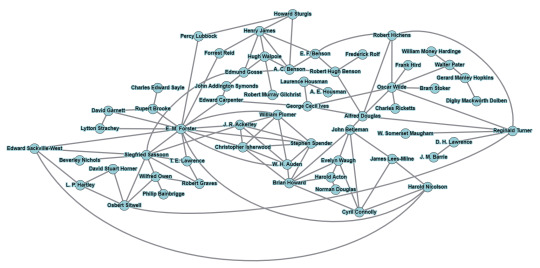
As a great admirer of gay literature, the social circles of gay and bisexual male writers is something that piques my interest. Due to the dangerousness of the matter in the past and also because it revolves around a relatively small niche, it seems that there was high level familiarity between these figures. The United Kingdom, a country whose literary input has abundant homoerotic tones, is a very adequate setting to analyze such a configuration.
I've been building a graph on this subject for some time, and now it seems mature enough for me to post it. It's a diagram based on friendship connections — deep or superficial —, although romantic and family-related connections are also included. Just a mutual recognition of existence isn't enough to justify a connection (otherwise most of them would be linked to Wilde!), and rivalries were not considered too. All the writers included were born during the Victorian and Edwardian eras (1837-1910), where this interconnectivity seemed particularly strong.
This is just an early version, as I imagine there is still a considerable amount of information that I missed. Therefore, I'm very open to suggestions and comments on it!
(Three Irishmen were also included in the diagram: Stoker, Wilde and Reid)
#literature#lit#gay literature#lgbt literature#gay history#lgbt history#british literature#english literature#bookblr#victorian#edwardian#henry james#edward carpenter#bram stoker#oscar wilde#a. e. housman#j. m. barrie#e. f. benson#george cecil ives#alfred douglas#somerset maugham#e. m. forster#d. h. lawrence#siegfried sassoon#rupert brooke#wilfred owen#robert graves#evelyn waugh#christopher isherwood#w. h. auden
382 notes
·
View notes
Text










Don't Answer the Phone! (1980)
"Don't you give a shit about getting this strangler off the streets?"
"What would you prescribe for the man, a firing squad?"
"That's not a bad idea. Mainly I don't want him back on the streets in a few years - or sooner, if some misguided shrink discovers he can find his ass in the dark with both hands."
#don't answer the phone!#strangling tw#violent imagery#video nasty#1980#robert hammer#michael d. castle#michael curtis#james westmoreland#flo lawrence#ben frank#nicholas worth#denise galik#stan haze#gary allen#pamela jean bryant#paula warner#gail jensen#dale kalberg#victor mohica#a procedural indie slasher not unlike (in shape and form) similar movies to meld those themes (The Zodiac Killer or Mardi Gras Massacre#come to mind‚ I've posts on both somewhere). this distinguishes itself by its sheen of professionalism; it's a damn site better looking#than those other two films‚ better written and acted too. don't get me wrong‚ this is still trashy cinema; it's just that it's so#competently made and looks so good that‚ with some minor edits‚ this same script could very easily have been made (for a lot more money) in#the mid 90s as a mainstream psychological thriller. performances are largely pretty strong too‚ particularly Worth's gutsy‚ manic turn as#the killer; sadly most recognisable name Westmoreland is out of kilter with the rest‚ seems bored with the film and faintly embarrassed to#be there. also the location work (shot without permits on the streets of LA) is some impressive guerilla stuff that helps with that#impressive look that sells this film so well. my main confusion was the female lead being a radio psychiatrist#I honestly thought that Frasier had invented the concept‚ it's such a profoundly weird idea to me
7 notes
·
View notes
Text

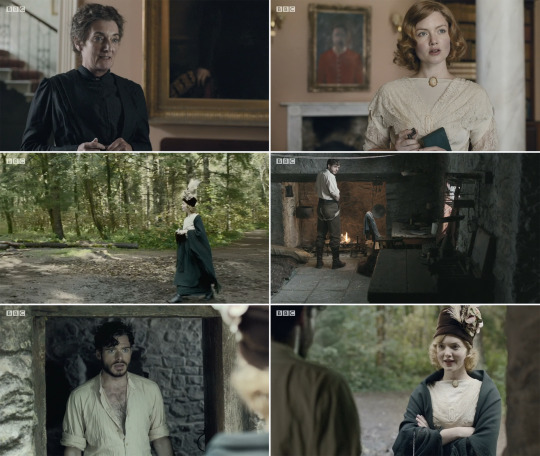
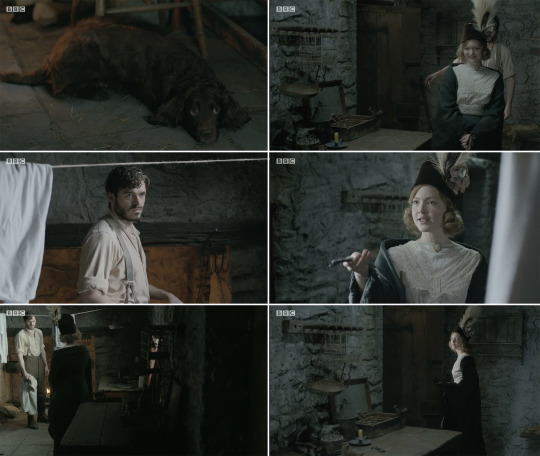

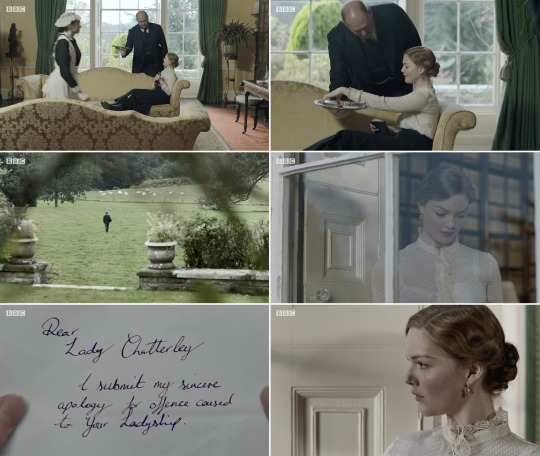
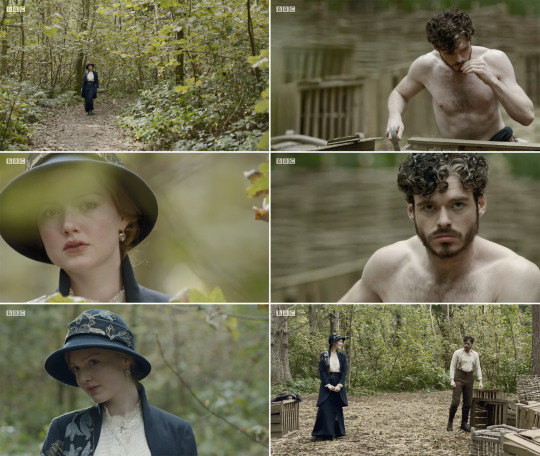
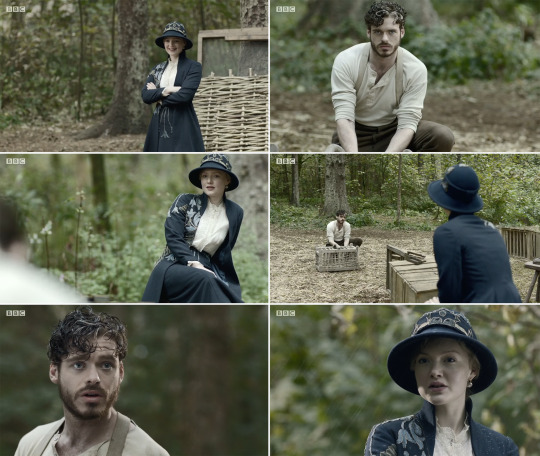

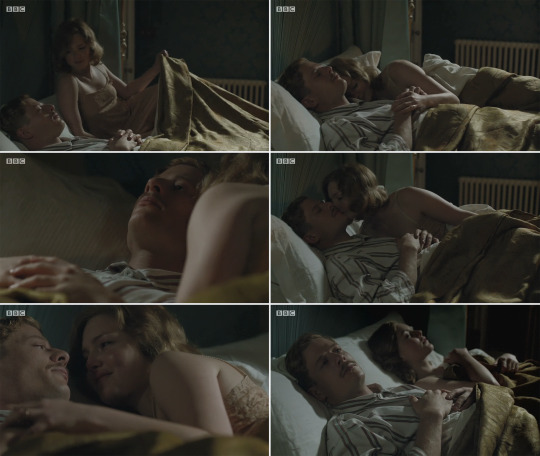


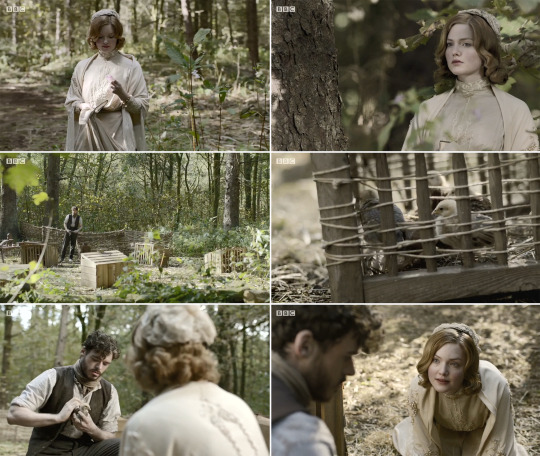
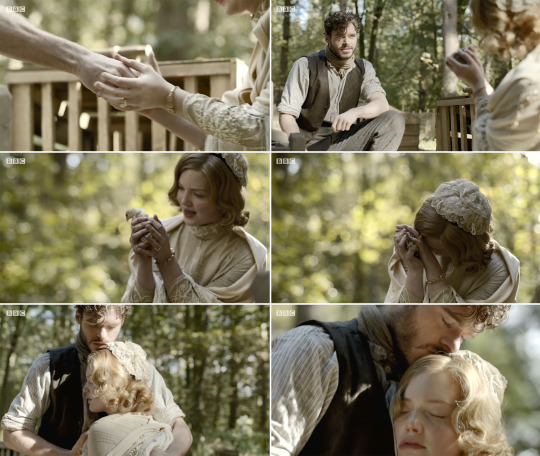
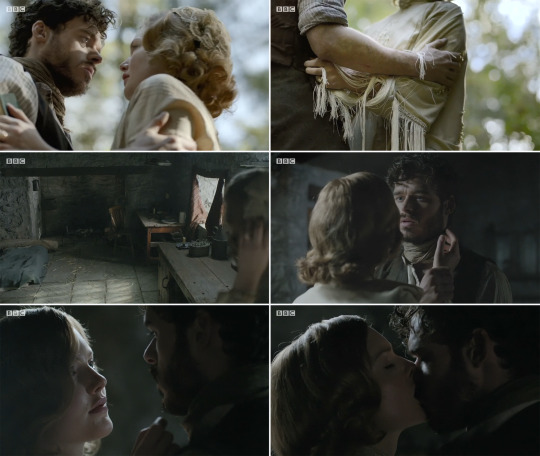
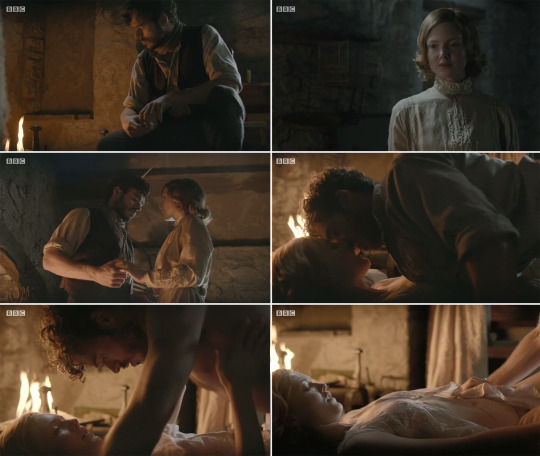
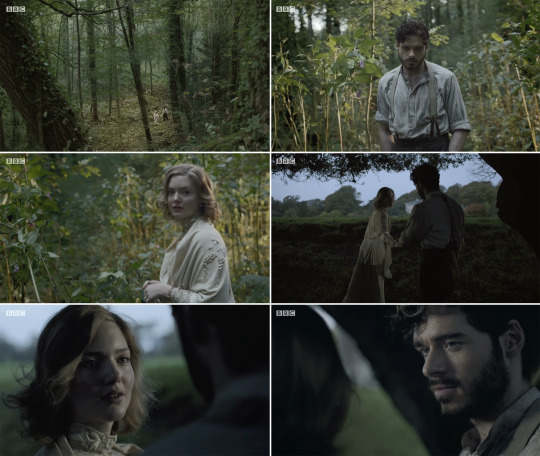
Lady Chatterley’s Lover 2015
#Lady Chatterley’s Lover 2015#british movies#book adaptation#Lady Chatterley’s Lover#historical drama#romantic movies#romantic drama#d. h. lawrence#holliday grainger#richard madden#james norton#Jodie Comer
25 notes
·
View notes
Text



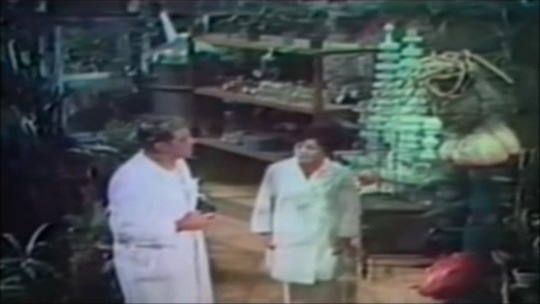
youtube
Body of the Prey (1967)
My rating: 6/10
You know how it is: You get burnt out at your job as a NASA rocket scientist, so you go to Japan and make a plant Frankenstein (a Plantenstein, if you will) and feed it human blood and puppies to prove that humans are descended from plants, until it goes on a rampage and you both plummet into an active volcano, most likely permanently traumatizing that poor baby goat. That old chestnut.
Anyway, while this is quite entertaining in its wackiness, it's also really rather racist with its dodgy accents and naff exoticism, so that's not great.
#Body of the Prey#Norman Earl Thomson#Edward D. Wood Jr.#James Craig#Tota Kondo#Lawrence O'Neill#Youtube
1 note
·
View note
Text




Dark Angel Book Covers by James D Lawrence, 1975.
79 notes
·
View notes
Text
Writing Notes: Modernist Literature

Influenced by worldwide industrialization and the first World War, literary modernism was an emotional and experimental style of prose and poetry that occurred in the late 19th and early 20th century literature.
Literary modernism - allowed writers to express themselves in more experimental ways than in the past.
Modernist works often contain non-linear narratives and free-flowing interior monologues that emphasize the experiences and emotions of the individual.
Writers of modernist literature include Franz Kafka, D. H. Lawrence, Virginia Woolf, T.S. Eliot, Gertrude Stein, Joseph Conrad, Samuel Beckett, William Carlos Williams, and W.B. Yeats.
Characteristics of Modernist Literature
Here are a few distinguishing characteristics of modernist literature.
Experimentation: Modernist literature employed a number of different experimental writing techniques that broke the conventional rules of storytelling. Some of those techniques include blended imagery and themes, absurdism, nonlinear narratives, and stream of consciousness���which is a free flowing inner monologue.
Individualism: Modernist literature typically focuses on the individual, rather than society as a whole. Stories follow characters as they adapt to a changing world, often dealing with difficult circumstances and challenges.
Multiple perspectives: Many modernist writers wrote in the first person perspective with multiple characters to emphasize the subjectivity of each character, and add depth to the story by presenting a variety of viewpoints.
Free verse: Many modernist poets rejected the traditional structure of poetry and opted for free verse, which lacks a consistent rhyme scheme, metrical pattern, or musical form.
Literary devices: Many modernist writers rely on literary devices like symbolism and imagery to help the reader understand the writing, and to create a stronger connection between the text and the reader.
Notable Modernist Writers
There have been many writers responsible for some of the greatest American modernist works, such as:
D.H. Lawrence: The novels of David Herbert Lawrence explore the disillusionment that came with the aftermath of industrialization. His novels like Women in Love (1920) and Lady Chatterley’s Lover (1928) focused on the interiority of their female protagonists, tying in strong themes of sexuality that challenged the mores of the time.
Franz Kafka: Franz Kafka’s work is often grounded in reality and takes fantastical or surrealist terms. One of his most famous works, The Metamorphosis, follows an ordinary man who transforms into a beetle.
Gertrude Stein: Often considered the “mother of modernism,” Gertrude Stein was a feminist poet whose work incorporated stream-of-consciousness and experimental narrative techniques. One of her most famous works is the collection of poems “Tender Buttons,” which uses the sounds of words and fragmented phrases to deliver a particular image to the reader.
T. S. Eliot: T.S. Eliot was a British poet, literary critic, essayist, and editor. Two of his most significant poems are “The Love Song of J. Alfred Prufrock” (1915)—his first work, which made liberal use of literary allusions to Shakespeare— and “The Wasteland” (1922)—which provides a dark and introspective look at human nature.
Ezra Pound: Poet Ezra Pound championed free verse and allusion, and is considered the one of first writers in modernist poetry to use imagism—a style that conveyed imagery in sharp, unadorned language. Some of Pound’s notable works include “In a Station of the Metro” (1913), “The Seafarer” (1911), and “The Return” (1917).
Virginia Woolf: Late Victorian novelist Virginia Woolf is responsible for novels like Mrs. Dalloway (1925) and To The Lighthouse (1927). Woolf incorporated stream of consciousness style into her texts, infusing the character’s interior monologue with emotion and complexity.
James Joyce: Modernist author James Joyce is known for telling small, slice-of-life tales in experimental and evocative ways. Dubliners (1914), a collection of 15 short stories, discusses Irish middle-class life in the early twentieth century. A Portrait of the Artist as a Young Man (1916) was Joyce’s first published novel, which delves into the themes of identity and intellectual enlightenment. Ulysses (1922) is one of Joyce’s most famous novels, the events of which all take place in a single day, and serves as a modern parallel to Homer’s Odyssey.
William Faulkner: William Faulkner is known for his Southern Gothic tales that incorporate unreliable narrators, multiple perspectives, symbolism, and nonlinear narratives. Some of his best-known works include As I Lay Dying (1929)—which follows the quest of a Southern family to bury their deceased mother in her hometown—and The Sound and the Fury (1930)—which tells the story of a Southern aristocratic family’s fall from grace through multiple perspectives.
E. E. Cummings: E.E. Cummings was an avant-garde writer who incorporated a number of different styles in his texts, and was known for his non-traditional format and approach to poetry and novels. Cummings wrote almost 3,000 poems in his life, including “[i carry your heart with me(i carry it in]” (1952) and “may i feel said he” (1935).
Ernest Hemingway: Author Ernest Hemingway is one of the most famous authors in American literature, known for his novels and short stories that make economical use of adjectives, and matter-of-fact observations. His short stories “Indian Camp” (1924) and “Hills Like White Elephants” (1927) both exemplify Hemingway’s modernist style.
Katherine Mansfield: Short story author Katherine Mansfield was influenced by visual art and psychoanalysis, and many of her stories contained epiphanies or important revelations about the main character. Some of her well-known stories include “Daughters of the Late Colonel” (1920) and “The Garden Party” (1922).
Marianne Moore: Marianne Moore was an innovative, modernist poet known for her irony and literary precision. Her notable works include “Poetry” (1919), “Nevertheless” (1944), and “A Face” (1949).
Modernist vs. Postmodernist Literature
Modernist literature focused on science, philosophy, art, and a variety of creative elements to examine the human experience.
Postmodernism, however, eschews absolute meaning and instead emphasizes play, fragmentation, metafiction, and intertextuality.
The postmodern literature movement in the mid-20th century was a reaction to the literary style of the modernist period, earlier in the century.
Postmodernism embodied the disenchantment of the post-World War II era, rejecting the idea of absolute truth, avoiding deep analysis, and a focusing on subjective beliefs rather than science.
Source ⚜ More: Writing Notes & References ⚜ Writing Resources PDFs
#modernism#modernist#literature#books#writeblr#writers on tumblr#writing reference#dark academia#bookblr#spilled ink#writing prompt#creative writing#booklr#writing inspiration#writing ideas#culture#history#light academia#lit#writing#writing resources
62 notes
·
View notes
Text
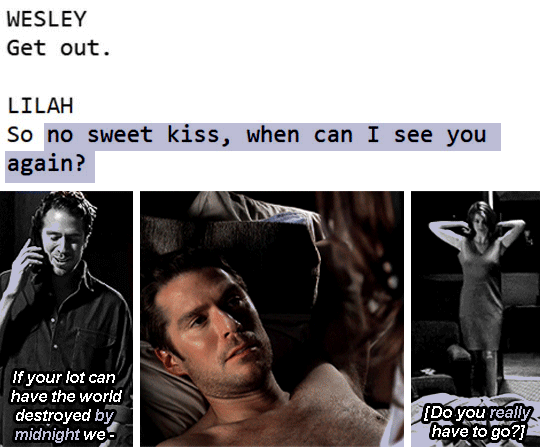




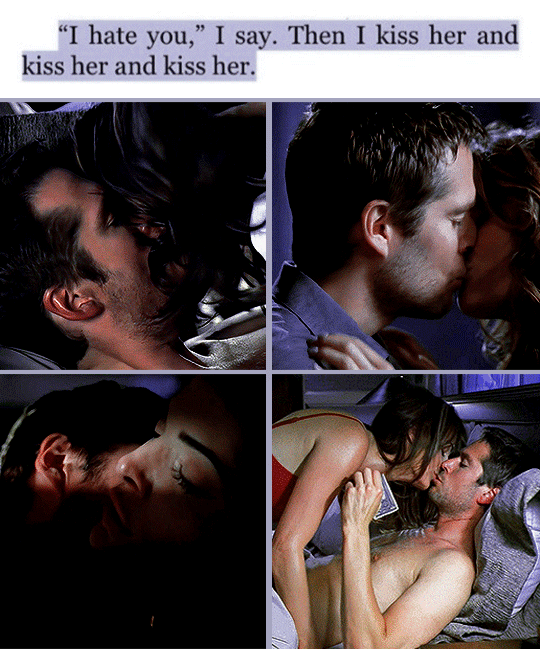



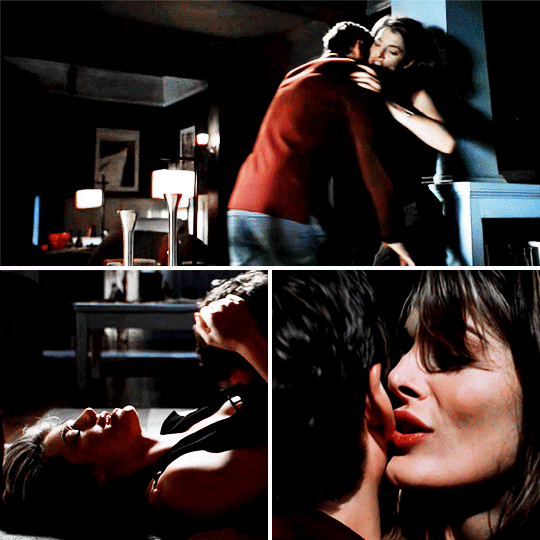

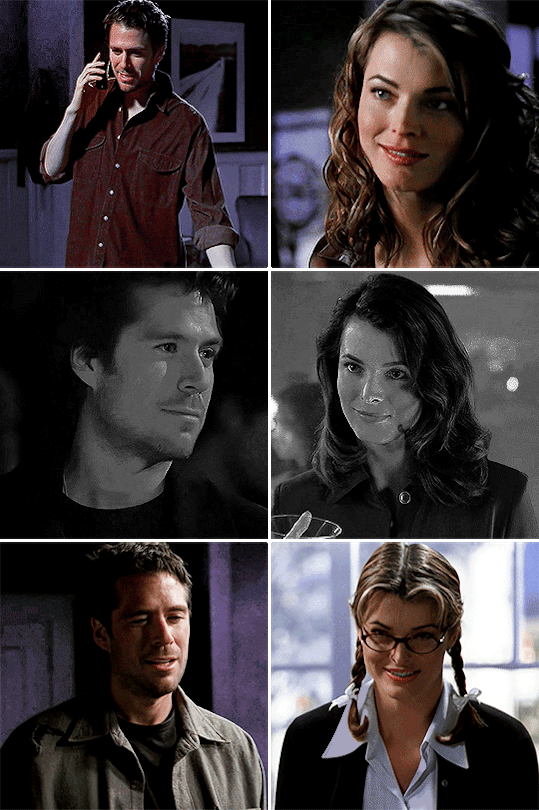

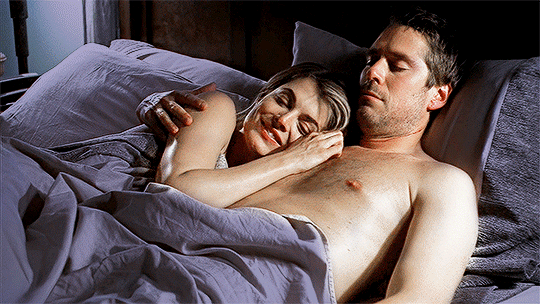
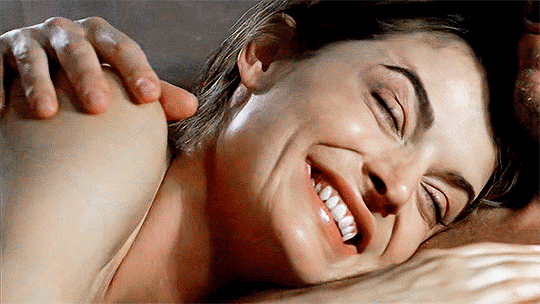

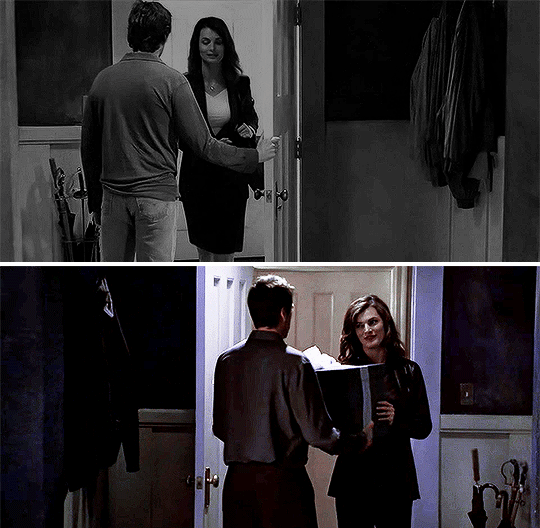
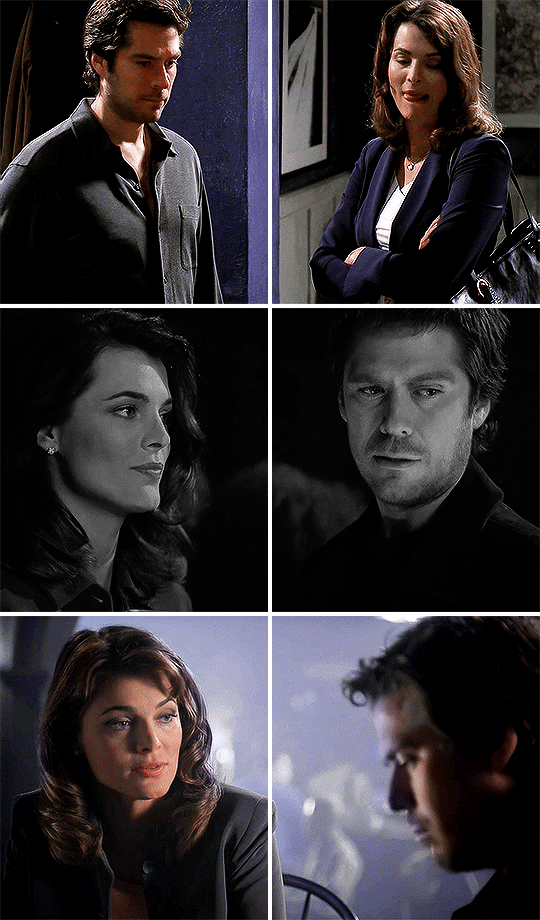

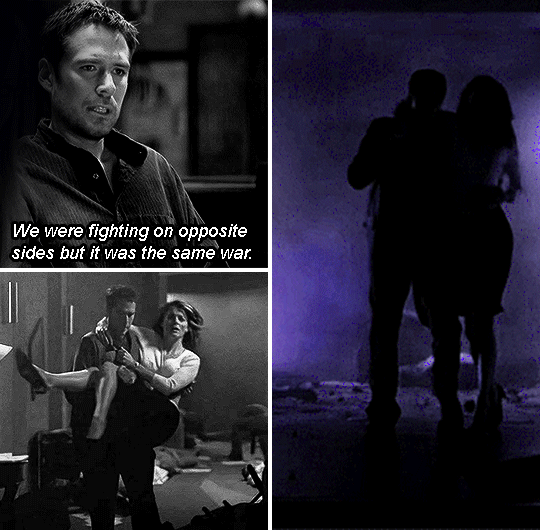
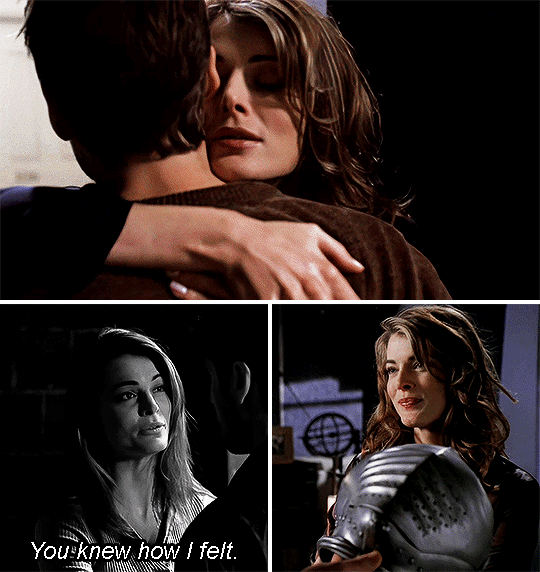


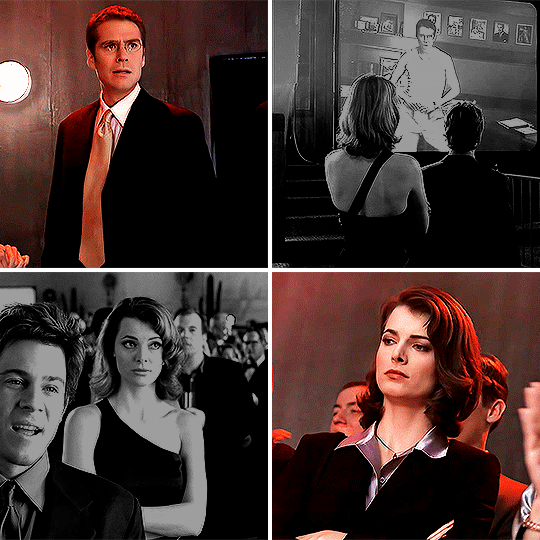

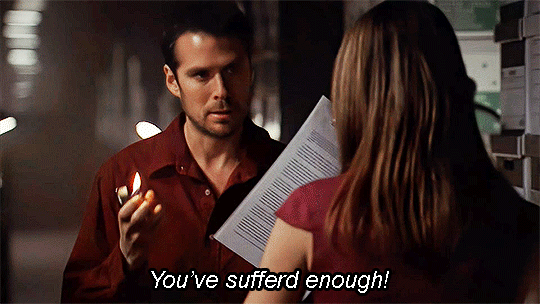
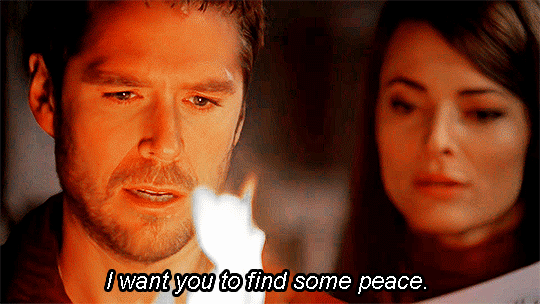
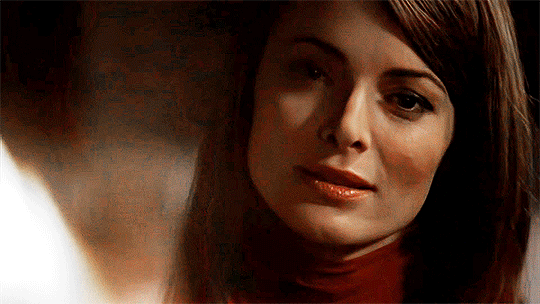

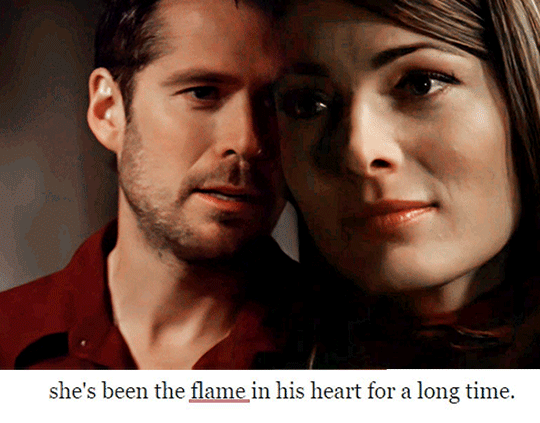
wesley & lilah + text
angel script "tomorrow" written by david greenwalt │ she drives me crazy by kelly quindlen │ d. h. lawrence, "the rainbow" │ emily palermo "love in the time of monsters" & josé saramago "cain" │love poem by megan fernandes │ if beale street could talk by james baldwin │ alexis denisoff, slayercon │angel script "home" written by tim minear │le cid by pierre corneille, tr. a.s. kline (edited) │ alexis denisoff, slayercon │insp
#angel the series#ats#atsedit#weslah#weslahedit#wesley wyndam pryce#lilah morgan#long post#mine: gifs
266 notes
·
View notes
Photo

Interview: Medieval Christian Art in the Levant
Medievalists retain misconceptions and myths about Oriental Christians. Indeed, the fact that the Middle East is the birthplace of Christianity is an afterthought for many. During the Middle Ages, Christians from different creeds and confessions lived in present-day Lebanon, Syria, Israel, and Palestine. Here, they constructed churches, monasteries, nunneries, and seminaries, which retain timeless artistic treasures and cultural riches.
James Blake Wiener speaks to Dr Mat Immerzee to clarify and contextualize the artistic and cultural heritage of medieval Christians who resided in what is now the Levant.
Dr Immerzee is a retired Assistant Professor at Universiteit Leiden and Director of the Paul van Moorsel Centre for Christian Art and Culture in the Middle East at Vrije Universiteit Amsterdam.
Saint Bacchus Fresco
James Gordon (CC BY)
JBW: The largest Christian community in what is present-day Lebanon is that of the Maronite Christians – they trace their origins to the 4th-century Syrian hermit, St. Maron (d. 410). The Maronite Church is an Eastern Catholic Syriac Church, using the Antiochian Rite, which has been in communion with Rome since 1182. Nonetheless, Maronites have kept their own unique traditions and practices.
What do you think differentiates medieval Maronite art and architecture from other Christian sects in the Levant? Due to a large degree of contact with traders and crusaders from Western Europe, I would suspect that we see “Western” influence reflected in Maronite edifices, mosaics, frescoes, and so forth.
MI: Especially in the 13th century, the oriental Christian communities enjoyed an impressive cultural flourishing which came to expression in the embellishment of churches with wall paintings, icons, sculpture, and woodwork and the production of illustrated manuscripts, but what remains today differs from on one community or region to another. In Lebanon, several dozens of decorated Maronite and Greek Orthodox churches are encountered in mountain villages and small towns in the vicinity of Jbeil (Byblos), Tripoli, the Qadisha Valley, and by exception in Beirut, but only a few still preserve substantial parts of their medieval decoration programs. Most churches fell into decay after the Christian cultural downfall in the early 14th century when the pressure to convert became stronger. While many church buildings were left in the state they were, others were renovated in the Ottoman period or more recently.
Christian Pilgrimage in the Middle Ages, c. 1000
Simeon Netchev (CC BY-NC-ND)
Remarkably Oriental Christian art displays broad uniformity with some regional and denominational differences. Cut off from the East Roman (Byzantine) Empire after the Arab conquest, it also escaped from the Byzantine iconoclastic movement (726-843 CE), which allowed the Middle Eastern Christians to develop their artistic legacy in their own way. An appealing subject is the introduction of warrior saints on horseback such as George and Theodore from about the 8th century. The West and the Byzantine Empire had to wait until the Crusader era to pick up this oriental motif and make it a worldwide success. But the borrowing was mutual. Mounted saints painted in Maronite, Melkite (Greek Orthodox), and Syriac Orthodox churches would increasingly be equipped with a chain coat and rendered with their feet in a forward thrust position, a battle technique developed within Norman military circles. Moreover, the Syrian equestrian saints Sergius and Bacchus were rendered holding a crossed ‘crusader’ banner, an attribute usually associated with Saint George, as if they were Crusader knights. Apart from these examples, there is little evidence of Oriental susceptibility to typically Latin subjects. We find Saint Lawrence of Rome represented in the Greek Orthodox Monastery of Our Lady near Kaftun, but this is exceptional.
Normally, one cannot tell from wall paintings in Lebanon to which community the church in question belonged. They all represented the same subjects and saints whose names are written in Greek and/or Syriac and may have recruited painters from the same artistic circles. Regarding architecture, the last word has not been said on this matter, because the documentation of medieval Lebanese church architecture is still in progress. Nevertheless, the build of some churches undeniably displays Western architectural influences; for example, the Maronite Church of Saint Sabas in Eddé al-Batrun is even plainly Romanesque in style.
JBW: Following my last question, is it then correct to assume that the Crusader lands – Edessa, Antioch, Tripoli, and Jerusalem – were quite receptive to Eastern Christian styles?
MI: That is difficult to tell because there is next to nothing left in the former County of Edessa and the Principality of Antioch. We do have some decorated churches in the former Kingdom of Jerusalem (Abu Gosh, Bethlehem), and here we see a strong focus on Byzantine craftsmanship and Latin usage. Apart from the preserved church embellishment in the Lebanese mountains, there are some fascinating, stylistically and thematically comparable instances across the border with Syria.
Saint Peter in Sinai
Wikipedia (Public Domain)
Although situated within Muslim territory, the Qalamun District between Damascus and Homs stands out for its well-established Greek Orthodox and Syriac Orthodox populations; and from the 18th century onwards, also Greek Catholics and Syrian Catholics. Interestingly, stylistic characteristics confirm that indigenous Syrian painters were also involved in the decoration inside Crusader fortresses such as Crac des Chevaliers and Margat Castle in Syria. It was obviously easier to contract local manpower than to find specialists in Europe.
JBW: The Byzantine Empire exuded tremendous political, cultural, and religious sway across the Levant throughout the Middle Ages; a sizable chunk of the Christian population in both Syria and Lebanon still adheres to the rituals of the Greek Orthodox Church even today.
MI: Leaving aside the cultural foundations laid before the Arab conquest, the contemporary Byzantine influences can hardly be overlooked. In the 12th and 13th centuries, itinerating Byzantine-trained painters worked on behalf of any well-paying client within Frankish and Muslim territory, from Cairo to Tabriz, irrespective of their denominational background. This partly explains the introduction of some ‘fashionable’ Byzantine subjects and the Byzantine brushwork of several mural paintings and icons. Made in the 1160s, the Byzantine-style mosaics in the Church of the Nativity at Bethlehem are believed to be the result of Latin-Byzantine cooperation at the highest levels; they exhale the propagandistic message of Christian unity. In 1204, however, the Crusaders would conquer Constantinople and substantial parts of the Byzantine Empire. The Venetians brought the bounty to Venice, and, surprisingly, also to Alexandria with the consent of the sultan in Cairo, intending to sell the objects in the Middle East. So much for Christian unity…
The Eastern Greek Orthodox Church has its roots in the Chalcedonian dispute about the human and divine nature of Christ in 451, which resulted in the dogmatic breakdown of the Byzantine Church into pro- and anti-Chalcedonian factions. Like the Maronites, the Melkites (‘royalists’) remained faithful to the former, official Byzantine standpoint, except for their oriental patriarchs in Antioch, Alexandria, and Jerusalem were officially allowed autonomy without direct interference from Constantinople. On the other hand, the Syriac Orthodox became dogmatically affiliated with the identically ‘Miaphysite’ Coptic, Ethiopian, and Armenian Churches. To complicate matters even more, part of the Greek Orthodox and Syriac Orthodox communities joined the Church of Rome in the 18th century. This resulted in the establishment of the Greek Catholic and Syriac Catholic Churches.
The Church of Nativity, Bethlehem
Konrad von Grünenberg (Public Domain)
JBW: Could you tell us a little bit more with regard to the Syriac Orthodox Church? If I’m not mistaken, there was a flourishing of the building of churches and monasteries by Syriac Orthodox communities once they fell under Muslim rule around 640.
MI: As a Miaphysite community, the Syriac Orthodox enjoyed the same protected status as other non-Muslim communities under Muslim rule. This allowed them to establish an independent Church hierarchy headed by their patriarch who nominally resided in Antioch, which covered large areas in Iran, Iraq, Turkey, and Syria. Some of their oldest churches, with architectural sculpture and occasionally a mosaic, are situated in the Tur Abdin region in Southeast Turkey. Remarkably, around the year 800, a group of monks from the city of Takrit (present-day Tikrit in Iraq) migrated to Egypt to establish a Syriac ‘colony’ within the Coptic monastic community. Their ‘Monastery of the Syrians’ (Deir al-Surian) still exists and is one of Middle Eastern Christianity’s key monuments for its architecture, wall paintings, icons, wood- and plasterwork ranging in date from the 7th to the 13th centuries. The monastery also houses an extensive manuscript collection. Another decorated monastery is the Monastery of St Moses (Deir Mar Musa; presently Syriac Catholic) near Nebk to the north of Damascus, where paintings from the 11th and 13th-centuries can still be seen. The Monastery of St Behnam (Deir Mar Behnam; presently Syriac Catholic) near Mosul is reputed for its 13th-century architectural sculpture and unique stucco relief, but unfortunately, a lot has been destroyed by ISIS warriors.
The Syriac Orthodox presence in Lebanon remained limited to a church dedicated to Saint Behnam in Tripoli, and the temporary use of a Maronite church dedicated to St Theodore at the village of Bahdeidat by refugees from the East who were on the run from the Mongols during the 1250s. This church still displays its complete decoration program from this period. It is impossible to tell which community arranged the refurbishment, but the addition of a donor figure in Western dress testifies to support from a (probably) local Frankish lord. Finally, the Syriac Orthodox also excelled in manuscript illumination, examples of which can be found in Western collections and the patriarchal library near Damascus.
JBW: As the Lebanese and Syrian Greek Orthodox Churches had fewer dealings with Western Europeans than the Maronite Church, does medieval Christian Orthodox art in Lebanon and Syria reflect and maintain the designs and styles of medieval Byzantium? If so, in what ways, and where do we see deviation or innovation?
MI: As I said before, Byzantine-trained artists have been surprisingly active in the Frankish states and beyond, especially during the 13th century. I prefer to label them as “Byzantine-trained” instead of “Byzantine,” because it is not always clear where they came from. To mention an example, painters from Cyprus still worked in the Byzantine artistic tradition but no longer fell under the authority of the emperor after the Crusader conquest of the island in 1291. Culturally they were still fully Byzantine, but, speaking in modern terms, they would have had the Frankish-Cypriot nationality. The little we can say from the preserved paintings is that some Cypriot artists traveled to the Levant in the aftermath of the power change in search of new clientele. It is unknown if they stayed or returned after the accomplishment of their tasks, but around the mid-13th century we see the birth of a ‘Syrian-Cypriot’ style which combines Byzantine painting techniques with typically Syrian formal features and designs; for example, in the afore-mentioned Monastery at Kaftun in Lebanon. Typically, instances of this blended art are not only encountered in Lebanon and Syria but also in Cyprus.
The Virgin and Child Mosaic, Hagia Sophia
Hagia Sophia Research Team (CC BY-NC-SA)
Focusing on the shared elements in Oriental Christian and Byzantine art, the example of apse decorations illustrates the resemblances and often also subtle differences. From the Early Christian period, the common composition in the apse behind the altar consisted of the mystical appearance of Christ (Christ in Glory) between the Four Living Creatures in the conch and the Virgin between saints, such as the apostles and Church fathers, in the lower zone. However, an early variant encountered in Egypt renders the biblical Vision of Ezekiel: here, Christ in Glory is placed on the fiery chariot the prophet saw. Recent research has brought to light that this variant was also applied in Syriac Orthodox churches in Turkey and Iraq as late as the 13th century. Medieval oriental conch paintings often combine Christ in Glory with the Deesis, that is, the Virgin and St John the Baptist pleading in favour of mankind. Whereas the Byzantines kept these subjects separated, the ‘Deesis-Vision’ is encountered from Egypt to Armenia and Georgia in churches of all denominations
JBW: One cannot discuss medieval Christian art in the Near East without making some mention of Armenians and Georgians. The first recorded Armenian pilgrimage occurred in the early 4th century, and Armenian Cilicia (1080-1375) flourished at the time of the Crusades. During the reign of Queen Tamar (r. 1184-1213), Georgia assumed the traditional role of the Byzantine crown as a protector of the Christians of the Middle East. Armenians and Georgians intermarried not only with one another but also with Byzantines and Crusaders.
Where is the medieval Armenian and Georgian presence the strongest in the Levant? Is it discernible?
Tomb of Saint Hripsime in Armenia
James Blake Wiener (CC BY-NC-SA)
MI: Medieval Armenian and Georgian art can be found in their homelands, but there are also surviving works testifying to their presence in the Levant and Egypt. Starting with the Armenians, they have always lived in groups dispersed throughout the Middle East, whereas in Jerusalem they have their own quarter. A 13th-century wooden door with typically Armenian ornamentation and inscriptions in the Church of the Nativity in Bethlehem testify to the interest Armenians took in the Holy Land. Further to the south, a 12th-century mural painting with Armenian inscriptions in the White Monastery near Sohag reminds us of the strong Armenian presence in Egypt under Fatimid rule during the 11th to 12th centuries. They had arrived in the wake of the rise of power of the Muslim Armenian warlord and later Vizir Badr al-Jamali, who seized all power in the Fatimid realm during the 1070s. He not only brought his own army consisting of Christian and Muslim Armenians but also made Egypt a safe home for Armenians from more troubled areas.
The Christian Armenians had their own monastery and used a number of churches in Egypt. However, these were appropriated by the Copts at the downfall of Fatimid power and the subsequent expulsion of all Armenians during the 1160s. The Armenian catholicos or head of Egypt is known to have left for Jerusalem taking with him all the church treasures.
At the White Monastery, a mural was made by an artist named Theodore originating from a village in Southeastern Turkey on behalf of Armenian miners who were apparently allowed to use the monastery’s church. It is hard to believe that Theodore came all the way to accomplish just one task in this remote place. There can be no doubt that he decorated more Armenian churches during his stay in Egypt, but the Copts thoroughly wiped out all remaining traces of their previous owners.
The Georgian presence was limited to Jerusalem, where they owned the Monastery of the Holy Cross until it was taken over by the Greek Orthodox in the 17th century. In the monastery’s church, a series of 14th-century paintings with Georgian inscriptions are a reminder of this period. In addition, an icon representing St George and scenes of his life painted during the early 13th century, and kept in the Monastery of Saint Catherine in the Sinai, was a gift from a Georgian monk, who is himself depicted prostrating at the saint’s feet.
St. Catherine's Monastery, Sinai
Marc!D (CC BY-NC-ND)
JBW: Because we touched upon the incorporation of outside artistic influences coming from Western Europe and Byzantium to the Levant, I wondered if you might offer a final comment or two on those architectural or artistic influences coming from the Arab World or even the wider Islamic world.
To what extent did Levantine Christians – who often lived near their Muslim neighbors – adopt or assimilate Islamic styles of art and architecture?
MI: The earliest examples of Islamic art from the Umayyad era display strong influences of Late Antiquity, which in turn had also been the source of inspiration to early Christian art. Over the course of time, these artistic relatives would gradually grow apart to meet again on specific occasions. The earliest example of Islamic-inspired Christian art is the purely ornamental stucco reliefs in the Monastery of the Syrians in Egypt. Constructed during the early 10th century by the Abbot Moses of Nisibis. Its plastered altar room exudes the same atmosphere as houses in the 9th-century Abbasid capital of Samarra and the similarly decorated Mosque of Ibn Tulun (an Abbasid prince who came to Egypt as its governor) in Cairo.
The Mosque of Ibn Tulun, Cairo Egypt
Berthold Werner (CC BY)
The decoration of Fatimid-era sanctuary screens in Coptic churches and woodwork from Egyptian Islamic, Jewish, and secular contexts are fully interchangeable; likewise, 13th-century architectural sculpture, manuscript illustrations, and metalwork from the Mosul area display the same shared stylistic and iconographic artistic language. Broadly speaking, we are obviously dealing with craftsmen working on behalf of different parties at the local level regardless of their religious backgrounds. Occasionally, one comes across ‘Islamic’ ornaments in wall paintings, but the overall impression is that Christian painting was subject to blatant conservatism when compared to more fashionable, ‘neutral’ items of interior decoration. The only Arabic inscriptions found in mural paintings concern texts commemorating building or refurbishment activities, or graffiti left by visitors. There obviously was a difference in status between the vernacular spoken language and the Church’s Greek and Syriac.
JBW: Dr. Mat Immerzeel, thanks so much for your time and consideration.
MI: You are welcome; it is my pleasure to contribute to your magazine.
Mat Immerzeel has been active in the Middle East since 1989, first in Egypt, then in Syria and Lebanon, and recently in Cyprus. His main field of study is the material culture of Oriental Christian communities from the 3rd century to the present. In particular, he studies wall paintings, icons, stone and plaster sculpture, woodwork, and manuscript illustrations. He has participated in research projects focusing on the formation of religious communal identity, the training of local collection curators, and restoration and documentation campaigns. He is the Director of the Paul van Moorsel Centre for Christian Art and Culture in the Middle East and editor-in-chief of the journal Eastern Christian Art (ECA) published by Peeters Publishers in Leuven, the Netherlands.
Continue reading...
40 notes
·
View notes
Text
United Universes Tour 2024!- We Didnt start the Fire!!
Dodger- “Oh somethings burning!! Burning!!!! Come on lets try to fight it!!!!”
The song then began!!!! And Dodger looked like he was ready to fight it!!!
Dodger- Harry Truman, Doris Day, Red China, Johnnie Ray South Pacific, Walter Winchell, Joe DiMaggio
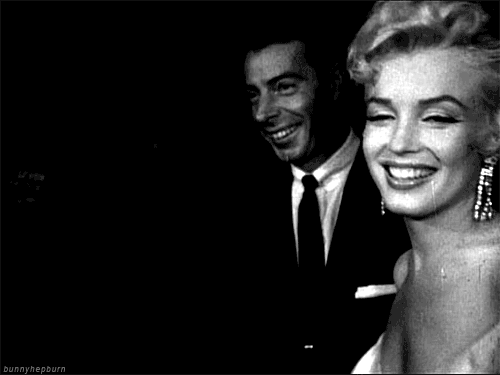
Joe McCarthy, Richard Nixon, Studebaker, television North Korea, South Korea, Marilyn Monroe Rosenbergs, H-bomb, Sugar Ray, Panmunjom Brando, “The King and I” and “The Catcher in the Rye"Eisenhower, vaccine, England’s got a new queen Marciano, Liberace, Santayana goodbye!!

We didn’t start the fire It was always burning Since the world’s been turning We didn’t start the fire No we didn’t light it But we tried to fight it
Joseph Stalin, Malenkov, Nasser and Prokofiev Rockefeller, Campanella, Communist Bloc!
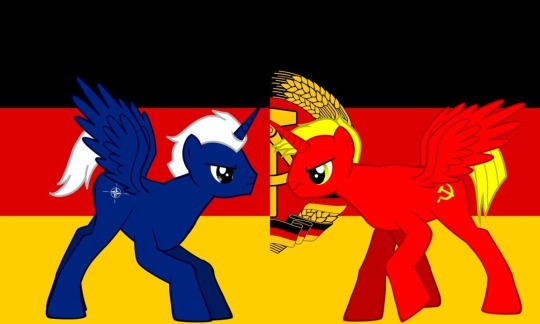
Roy Cohn, Juan Peron, Toscanini, Dacron Dien Bien Phu falls, “Rock Around the Clock"Einstein, James Dean, Brooklyn’s got a winning team Davy Crockett, Peter Pan, Elvis Presley, Disneyland
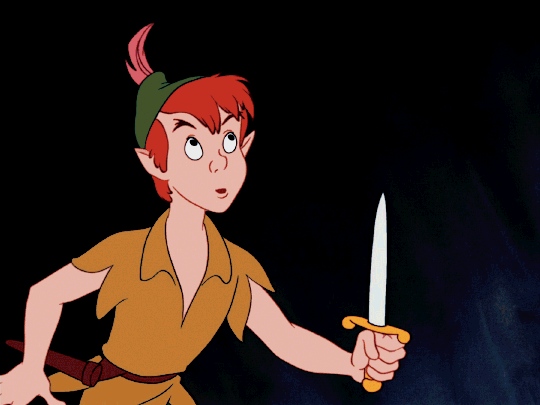
Bardot, Budapest, Alabama, Krushchev Princess Grace, “Peyton Place”, trouble in the Suez!!
We didn’t start the fire It was always burning Since the world’s been turning We didn’t start the fire No we didn’t light it But we tried to fight it
Little Rock, Pasternak, Mickey Mantle, Kerouac Sputnik, Chou En-Lai, “Bridge on the River Kwai"Lebanon, Charlse de Gaulle, California baseball Starkweather, homicide, children of thalidomide
Buddy Holly, “Ben Hur”, space monkey, Mafia Hula hoops, Castro, Edsel is a no-goU2, Syngman Rhee, payola and Kennedy Chubby Checker, “Psycho”, Belgians in the Congo
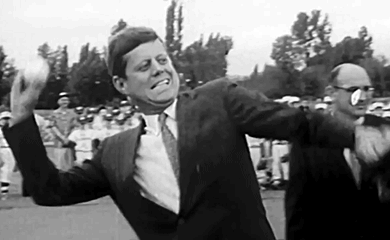
We didn’t start the fire It was always burning Since the world’s been turning We didn’t start the fire No we didn’t light it But we tried to fight it
Hemingway, Eichmann, “Stranger in a Strange Land” Dylan, Berlin, Bay of Pigs invasion"Lawrence of Arabia”, British Beatlemania Ole Miss, John Glenn, Liston beats Patterson

Pope Paul, Malcolm X, British politician sex JFK, blown away, what else do I have to say?!!

We didn’t start the fire It was always burning Since the world’s been turning We didn’t start the fire No we didn’t light it But we tried to fight it!!!
Birth control, Ho Chi Minh, Richard Nixon back again Moonshot, Woodstock, Watergate, punk rock Begin, Reagan, Palestine, terror on the airline Ayatollah’s in Iran, Russians in Afghanistan"Wheel of Fortune”

, Sally Ride, heavy metal, suicide Foreign debts, homeless vets, AIDS, crack, Bernie Goetz Hypodermics on the shores, China’s under martial law Rock and roller cola wars, I can’t take it anymore!

We didn’t start the fire It was always burning Since the world’s been turning We didn’t start the fire But when we are gone Will it still burn on, and on, and on, and on
We didn’t start the fire!

Triple D-(It was always burning!! Since the world’s been turning!!) We didn’t start the fire No we didn’t light it But we tried to fight it
We didn’t start the fire It was always burning Since the world’s been turning We didn’t start the fire No we didn’t light it But we tried to fight it
Everyone was singing along!! Like crazy! the end was near but the energy is high!
(All credits to original creators! Video belongs to Edit Carrel on Youtube and all characters belong to there respected hosts!)
(I must say this video is still awesome!!! :3 It never gets old! Thankyou! You know who you are!! :3)
youtube
@thelittlemermaidfan1989
@mellowwpopper
@mellowwpuphub
@teen-lyoko-fan7777
@goldmudder
@andy-squirrel-and-friends
@askdj-timelord2
@keirastarlightdraconequus
(Credits to Disney, the Beatles, JFK, MLP, Billy Joel, and all blogs tagged as well as creator of video!!!)
#dodger oliver and company#United Universes Tour 2024#We Didnt Start the Fire#Billy Joel#MLP#Youtube
20 notes
·
View notes
Text

1A
Zuko (Avatar: The Last Airbender) VS Mamoru Chiba/Prince Endymion (Sailor Moon)
Utena Tenjou (Revolutionary Girl Utena) VS Vegeta (Dragon Ball Z)
Li Shang (Mulan) VS Prince Charmont (Ella Enchanted)
Prince Charming (Shrek) VS Legolas (Lord of the Rings)
Phillip (Sleeping Beauty) VS Prince Humperdinck (The Princess Bride)
Christopher Rupert Windermere Vladimir Carl Alexander Francois Reginald Lancelot Herman Gregory James (Cinderella 1997) VS Prince Lir (The Last Unicorn)
Arthur Pendragon (BBC Merlin) VS T'Challa (Marvel)
Prince Cornelius (Thumbelina) VS Ben (Descendants)
2A
Xie Lian (Heaven Official's Blessing) VS Derek (The Swan Princess)
Cavendish (One Piece) VS Atem (Yu-Gi-Oh!)
Yuu Kashima (Gekkan Shoujo Nozaki-kun) VS Kanata (Go Princess Precure)
Romeo Montague (Romeo x Juliet) VS Yusuke Urameshi (Yu Yu Hakusho)
Zen Wistalia (Snow White with the Red Hair) VS Ashitaka (Princess Mononoke)
Mytho (Princess Tutu) VS Soma Asman Kadar (Black Butler)
Sidon (The Legend of Zelda: Breath of the Wild) VS The Beast/Adam (Beauty and the Beast)
Flynn Rider/Eugene Fitzherbert (Tangled) VS Eric (The Little Mermaid)
1B
Leona Kingscholar (Twisted Wonderland) VS Prince Fluff (Kirby's Epic Yarn)
Prince Peasley (Mario & Luigi: Superstar Saga) VS PrinceMamemon (Digimon)
Olivert Reise Arnor (Trails Series) VS Arthur D. Lawrence (Rune Factory 4)
The Blind Prince (The Liar Princess and the Blind Prince) VS Alain (Unicorn Overlord)
Alcryst (Fire Emblem Engage) VS Zagreus (Hades)
Jak (Jak and Daxter) VS Lancer (Deltarune)
Asriel Dreemurr (Undertale) VS Goro (Mortal Kombat)
Roman Sanders (Sanders Sides) VS Dirk Strider (Homestuck)
2B
Turtle (Wings of Fire) VS Krel Tarron (Tales of Arcadia)
Box Prince (Adventure Time) VS Lotor (Voltron Legendary Defender)
Bowser Jr (Mario Franchise) VS Manaphy (Pokémon)
Callisto Regulus (Death is the Only Ending for the Villainess) VS Prince Gerard of Greenleigh (Dimension 20: Neverafter)
Kiriona Gaia (The Locked Tomb) VS The Little Prince (The Little Prince)
Tedros (The School for Good and Evil) VS Cardan Greenbriar (The Folk of the Air)
Henry George Edward James Fox-Mountchristen-Windsor (Red, White & Royal Blue) VS Kaito (The Lunar Chronicles)
Prince Caspian (The Chronicles of Narnia) VS Hamlet (Hamlet)
20 notes
·
View notes
Text
Ergo Proxy References and Parallelisms Vol. II
Hello there and welcome back to the Compilation of Ergo Proxy's references and parallelisms with other forms of art Literature, Cinema and Music. On this volume I'll attempt to expand on other parallels between this anime and other classical works of culture.
Some interpretations here will be highly speculative, and whether the connections were intentional or no, it's not entirely clear in every case.
Further updating and editing will come soon as part of the maintenance o this post.
As always, thank you for reading.
VOLUME II:
- Meditatio XI In the White Darkness - City Lights Bookstore - Les mémoires d'un saint - Apollo et Artemis - Ophelia - 2001 Space Odyssey - Amrita - Blade Runner - Eine Klein Nacht - A Minoan Tragedy
In the White Darkness

Meditatio XI is titled just like the interactive multimedia poem created by Reiner Strasser in collaboration with M.D. Coverley (Marjorie Coverley Luesebrink) over a 9-month period in 2003-2004. Just like the episode is an exploration on the nature between the self and the memories, and the recollection (anamnesis) of Vincent's Experieces, this visual poem explores the nature of memory, particularly focusing on the experiences of individuals with Alzheimer's or Parkinson's diseases.
"ii — in the white darkness" was originally published in January 2004 on Strasser's website. It has been preserved using Ruffle by the Electronic Literature Lab in February 2021, ensuring its continued accessibility (LINK).
Note: This is my favorite episode of the serie, so, perhaps I'll dedicate it a disproportionately long dive in, when compared to the other episodes.
CITY LIGHTS BOOKSTORE
City Lights Booksellers & Publishers was established in 1953 by poet Lawrence Ferlinghetti and Peter D. Martin, and is an independent bookstore and publishing house located in San Francisco, California. Renowned for its commitment to world literature, the arts, and progressive politics

On the series, is the (mental) place that Vincent visits while he is lost on Meditatio XI.
Perhaps a sort of involuntary Mental Palace for his knowledge to be guarded. But, this time, He is lost, and the books are empty.
Les mémoires d'un saint
This one I don't feel is an intentional example, but I believe is worth mentioning.
The Memoirs of a Saint is a 1960 painting made by the french René Magritte, that features a stage-like setting with three monumental curtains, the central one filled with an image of a cloudy sky, creating this self contained contradiction between the interior and exterior, alluding perhaps to the internal contemplative stage of the mind.
This introspective exercise is actually the core of Meditatio XI and as so, is echoed over and over again as Vincent Law unravel his own persona to uncover Ergo Proxy as his concealed identity, buried in his unconscious as the product of a self-inflicted amnesia.


Yet another layer of the Blue Sky Theatre is the revelation that of the Deus Ex Machina in the homonymous Meditatio XXIII, on which even Ergo Proxy is revealed as a fabrication of the vengeful Proxy One, who sits under the representation of a blue sky (The same beams of light foreshadowed on the Proxy's Mind Theater are actually the cause of the demise of Proxy One). And with that the oneness of the individual is reconstructed and the discernment between outside and inside is disolved.


MEDITATIO XXIII: DEUS EX MACHINA
EXTRA: A quote
JJ (JJ本屋) quotes James Alonzo Bishop
"the future is an opaque mirror. Anyone who tries to look into it sees nothing but the dim outlines of an old and worried face." Jim Bishop, New York Journal-American, March 14, 1959
APOLO and ARTEMIS... and Heraclitus
On the Library there are two marble statues:


Apollo Belvedere
A 2nd century A.D. Roman copy of an original bronze statue created between 330 and 320 B.C. by the Greek sculptor Leochares.
and

Diana of Versailles
Another partially restored Roman copy (1st or 2nd century CE) of a lost Greek bronze original attributed to Leochares, c. 325 BCE.
The "Logos" or "meaning" behind this peculiar choice of symbols requires the conciliation of opposites through the interplay of meanings and the tension of words.
Artemis and Apollo, as twin deities from Greek mythology, are rich with symbolic meaning, representing complementary dualities and a harmonious balance of opposites.
Artemis is often associated with the moon, symbolizing intuition, mystery, and the subconscious. As a huntress her instrument is the bow.
Apollo represents the sun, symbolizing clarity, superego, reason, and illumination. His light drives away shadows, suggesting knowledge triumphing over ignorance. As a musician his instrument is the lyre.
The pulsation of a string in one is a weapon, an instrument of death, and on the other is the product of the death of an animal, but an instrument of joy. Is interesting to notice that in a polysemic sense the greek word bios can express the nuances behind the symbology conveyed on this Meditatio. Biós (βιός with the accent on the O) is the Greek for "bow". Bίοs (βίος with the accent on the I), is the Greek for "life". The Greek philosopher Heraclitus was aware of this conception and used them to express his dialectical views of nature. for him, and through him, other philosophers and thinkers did too:
"The bow's name is life, but its work is death." [source]
On the same way, the secondary creator, Ergo Proxy, builder of Romdeau, is the "Agent of Death".
The irony is that the very Title of this Meditatio, "In the White Darkness", exposes this internal but revealing contradiction.
Following the previously exposed is worth noting that the solar and lunar duality of those greek deities was a motif that also appeared on previous episodes in the shape of Senekis and Kaskis, the lover proxies from the double dome of Charos and Asura. The love between them, and the compulsive strife of their forces to annihilate mutually (enabled by the Pulse o the Awakening) gave them purpose and meaning, and motivated the absurd state of war among their respective citizens. The decaying halves of a same dome was on an insatiable conflict between parts de-voided of all human-like traits: The Knights droids vs the soldiers of the last War Battalion.
In the own psychological world of Vincent/Ergo, the amnesiac dissociation of his persona that fractured the interplay between anima and animus, between his two halves, can only be resolved by the integration and recognition of himself as a whole.
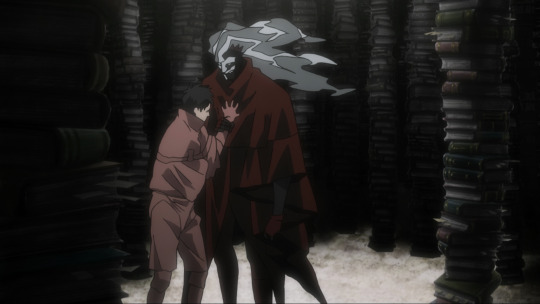
I think, therefore I am. I think therefore you are I am you. You are me
Ophelia

Ophelia is the title of the Meditatio XIV. On this episode, the protagonists arrive at an abandoned dome named Ophelia, with a mall of the same name to replenish their supplies. Unbeknownst to them, the dome's Proxy, capable of shape-shifting, subjects them to a series of illusions, delving into their psyches.
On the episode there is another obvious reference to Shakespeare's Ophelia

This is a direct nod to the Ophelia, as depicted by Sir John Everett Millais on a painting made on 1821.

2001 Space Odyssey
On the Show of Meditatio XV, some visual references to the classic film can be drawn. For Example the reference to the use of tools as bones, and the parallels between this first and last tool:



The Boomerang Star
AMRITA

As stated on the show, the biological material that forms the proxies it's called Amrita, a sanskrit term (अमृत) analogous to the greek amaranthos (ἀμάραντος) that means "immortal", "never-dying". It is a central concept within Indian religions and is often referred to in ancient Indian texts as an elixir, is comparable to the ambrosia of the greeks that also was related to the inmortality.
Amrita Cells lacks a Hayflick Limit (the he number of times a normal somatic, differentiated human cell population will divide before cell division stops) and so, they are essentially able to regenerate endlessly.
Blade Runner Death
Both Amnesia and Dr Eldon Tyrell from Blade Runner are blinded and killed by the same way: eye crushing. Dr Eldon Tyrell is the creator of the Nexus-6 Models on Blade Runner. Amnesia is the guardian of the memories of Mosko Dome, and stores the memories of Ergo Proxy.


EINE KLEINE NACHTMUSIC
On Meditatio XX, when Dedalous, Re-L and Swan are dinning, the classical piece playing is the second movement of Eine kleine Nachtmusik in G Major, K. 525, Romanza, quite popular for appearing on Alien The Eight Passenger.

A Minoan Tragedy (Kind of...)
Daedalus Yumeno (デダルス・ユメノ) is quite and interesting choice for the name of the Welfare Bureau. Both characters are brilliant on their fields and the bold approaches they apply to their schemes.
Deep is their hubris too, and their desire to shape the world to their whims. Both the mythological character and his anime homonym defy the natural order and provide the aid with the genetic experimentation. The first is the responsible of aiding Pasiphae to get pregnant by the White Bull (act that created the hybrid now called The Minotaur), and the second one is responsible for the cloning of Re-L Mayer and the hybridization between a Re-l and Monad Proxy. Also it's the mind behind the attempt of make the inhabitants of Romdeau able to reproduce again.
Beyond the name, that, Daedalus Yumeno is also surrounded by minor minoan references, as this dolphin on his holographic aquarium that comes straight from the early minoan paintings on the Crete Palace.

And there's also... The Thread

On greek myths, Daedalus provides the princess Ariadna with a ball of thread to help Theseus to navegate the Labyrinth. On the other hand Daedalus Yumeno gave REAL/Monad a ball of red thread for her to make easier to find her.
Eventually, on Meditatio XXIII, REAL/Monad takes the role both of Icarus and of Ariadne, but Daedalus Yumeno don't stand her abandoning him (again) for Vincent Law/Ergo Proxy, and destroys the Dome.
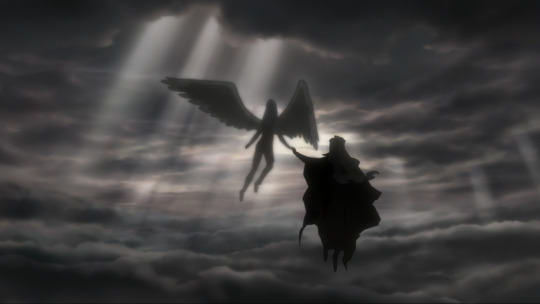
Ergo Proxy (our Theseus) then confronts his original, Proxy One (The Minotaur), and it's brought out of the crumbling dome by the now Winged ReaL/Monad.

But as most proxies, ReaL/Monad has a fatal weakness on her design, she is vulnerable to the sunlight and the UV rays. Thus, despite the warnings of Daedalus when she attempted to fly to close to the sun, she dies disintegrated, just as when Icarus tries to fly too high and close to the sun, his wax wings melts and he falls into the ocean.
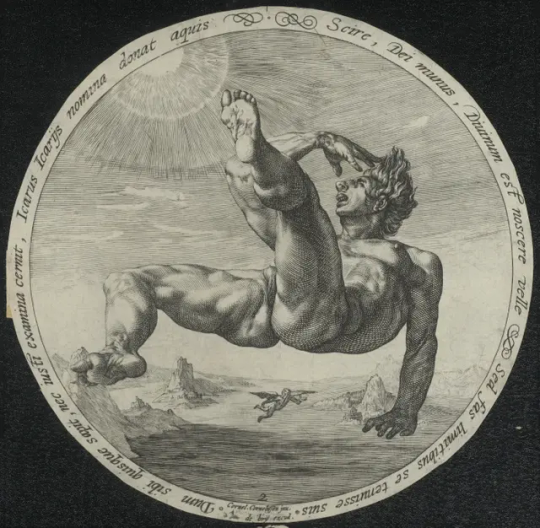
Fall of Icarus, ca. 1588 from a series of The Four Disgracers. Engraving by Hendrick Goltzius
11 notes
·
View notes
Text




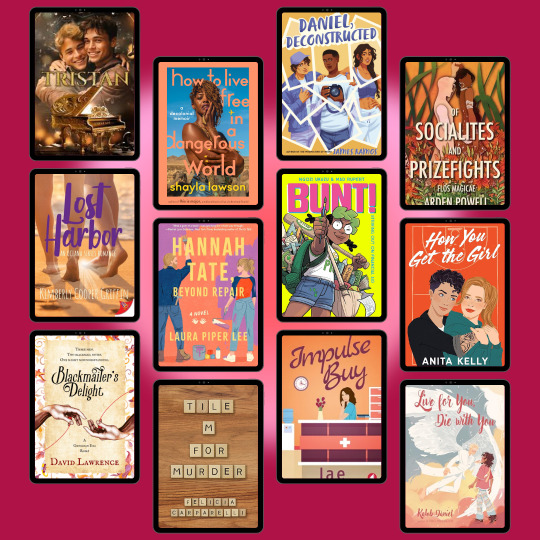
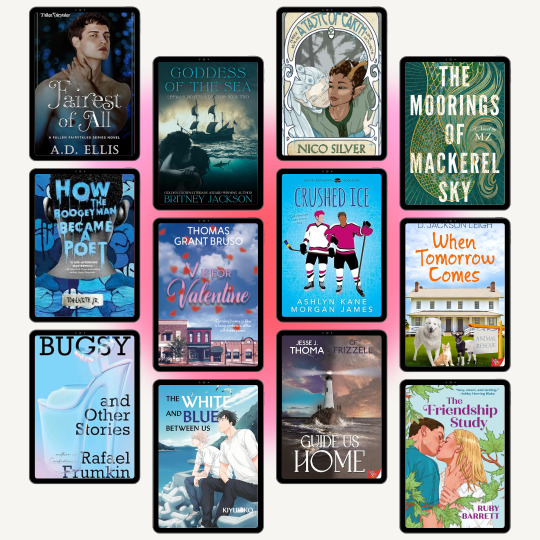

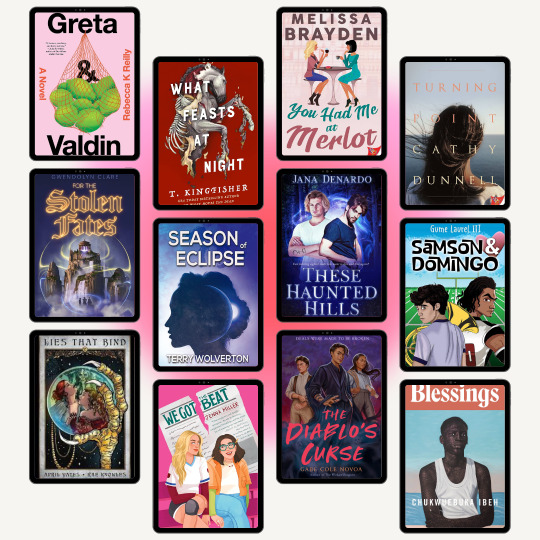

🌈 Queer Books Coming Out in February 2024
🌈 Good afternoon, my bookish bats! Struggling to keep up with all the amazing queer books coming out this month? Here are a FEW of the stunning, diverse queer books you can add to your TBR before the year is over. Remember to #readqueerallyear! Happy reading!
❤️ We Ate the Dark by Mallory Pearson 🧡 The Paper Boys by D.P. Clarence 💛 Skater Boy by Anthony Nerada 💚 Your Shadow Half Remains by Sunny Moraine 💙 A Vicious Game by Melissa Blair 💜 Clarion Call by Cayla Fay ❤️ Relit: 16 Latinx Remixes of Classic Stories edited by Sandra Proudman 🧡 The Absinthe Underground by Jamie Pacton 💛 Truthfully, Yours by Caden Armstrong 💙 Outsider by Jade du Preez 💜 Cross My Candy Heart by A.C. Thomas 🌈 The Tainted Cup by Robert Jackson Bennett
❤️ An Education in Malice by S. T. Gibson 🧡 The Imposition of Unnecessary Obstacles by Malka Ann Older 💛 Never a Bridesmaid by Spencer Greene 💚 The Rewind by Nicole Stiling 💙 Good Christian Girls by Elizabeth Bradshaw 💜 The Fox Maidens by Robin Ha ❤️ The Terrible by Tessa Crowley 🧡 Blood Rage by Ileandra Young 💛 Call of the Sea by Emily B. Rose 💙 Sign Me Up by C.H. Williams 💜 Ways and Means by Daniel Lefferts 🌈 Peaceful in the Dark by A.A. Fairview
❤️ We Are Only Ghosts by Jeffrey L. Richards 🧡 Dead Ringer by Robyn Nyx 💛 Somacultural Liberation by Dr. Roger Kuhn 💚 Stormbringer by Erinn Harper 💙 A Saga of Shields & Shadows by A.J. Shirley 💜 Ghost Town by R.E. Ward ❤️ I Heard Her Call My Name by Lucy Sante 🧡 The Night Alphabet by Joelle Taylor 💛 Remedial Magic by Melissa Marr 💙 Bloom by N.R. Walker 💜 Entwined by Alex Alberto 🌈 Queer Newark edited by Whitney Strub
❤️ Tristan by Jesse Roman 🧡 How to Live Free in a Dangerous World by Shayla Lawson 💛 Daniel, Deconstructed by James Ramos 💚 Of Socialites & Prizefights by Arden Powell 💙 Lost Harbor by Kimberly Cooper Griffin 💜 Hannah Tate, Beyond Repair by Laura Piper Lee ❤️ Bunt! Striking Out on Financial Aid by Ngozi Ukazu & Mad Rupert 🧡 How You Get the Girl by Anita Kelly 💛 Blackmailer’s Delight by David Lawrence 💙 Tile M for Murder by Felicia Carparelli 💜 Impulse Buy by Jae 🌈 Live for You, Die With You by Kalob Dàniel
❤️ Fairest of All by A.D. Ellis 🧡 Goddess of the Sea by Britney Jackson 💛 A Taste of Earth by Nico Silver 💚 The Moorings of Mackerel Sky by M.Z. Emily Zack 💙 How the Boogeyman Became a Poet by Tony Keith 💜 V is for Valentine by Thomas Grant Bruso ❤️ Crushed Ice by Ashlyn Kane & Morgan James 🧡 When Tomorrow Comes by D. Jackson Leigh 💛 Bugsy & Other Stories by Rafael Frumkin 💙 The White and Blue Between Us by Kiyuhiko 💜 Guide Us Home by CF Frizzell & Jesse J. Thoma 🌈 The Friendship Study by Ruby Barrett
❤️ Infinity Alchemist by Kacen Callender 🧡 Heart2Heart edited by Annabeth Albert 💛 No Time Like Now by Naz Kutub 💚 Bless the Blood by Walela Nehanda 💙 Vengeance Planning for Amateurs by Lee Winter 💜 Who We Are in Real Life by Victoria Koops ❤️ Prove It by Stephanie Hoyt 🧡 Mewing by Chloe Spencer 💛 Awakenings by Claudie Arseneault 💙 Born of Scourge by S. Jean 💜 Disciples of Chaos by M.K. Lobb 🌈 To Cage a God by Elizabeth May
❤️ Greta & Valdin by Rebecca K Reilly 🧡 What Feasts At Night by T. Kingfisher 💛 You Had Me at Merlot by Melissa Brayden 💚 Turning Point by Cathy Dunnell 💙 For the Stolen Fates by Gwendolyn Clare 💜 Season of Eclipse by Terry Wolverton ❤️ These Haunted Hills by Jana Denardo 🧡 Samson & Domingo by Gume Laurel III 💛 Lies that Bind by Rae Knowles & April Yates 💙 We Got the Beat by Jenna Miller 💜 The Diablo's Curse by Gabe Cole Novoa 🌈 Blessings by Chukwuebuka Ibeh
❤️ Out There by Iris Eliot 🧡 At Her Service by Amy Spalding 💛 Green Dot by Madeleine Gray
#books#queer#queer book recs#queer books#sapphic books#sapphic romance#lesbian romance#lesbian books#lesbian fiction#gay romance#gay books#lgbt author#lgbt writers#lgbtq books#books to read#book releases#book release#bi books#bisexual pride#bisexual books#batty about books#battyaboutbooks
51 notes
·
View notes
Text
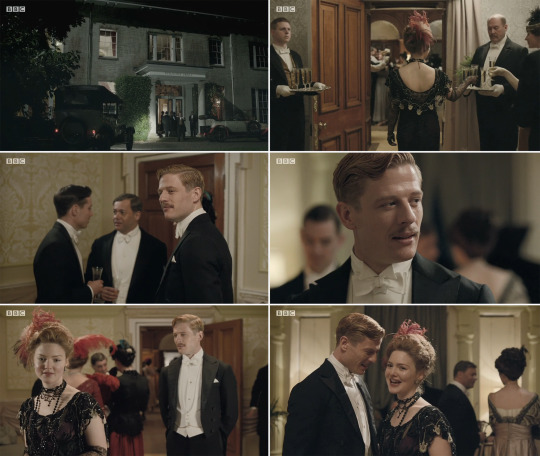


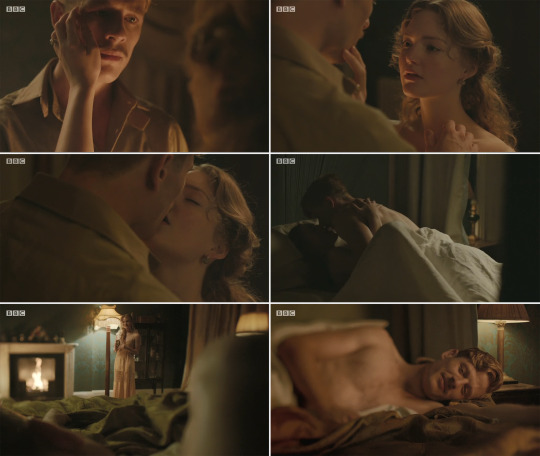






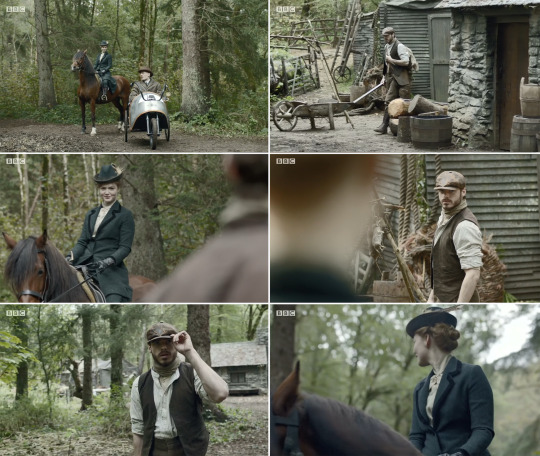
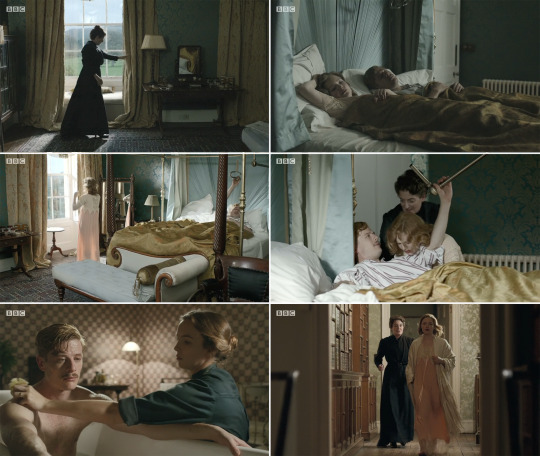
Lady Chatterley's Lover 2015
#Lady Chatterley's Lover 2015#british movies#book adaptation#Lady Chatterley's Lover#historical romantic drama#romantic drama#historical drama#D. H. Lawrence#Holliday Grainger#Richard Madden#James Norton#Jodie Comer
21 notes
·
View notes
Text

The Warriors will be released on 4K Ultra HD and Blu-ray on December 12 via Arrow Video. Laurie Greasley designed the new cover art for the 1979 action thriller; the original poster is on the reverse side.
Walter Hill (48 Hrs., Deadwood) directs from a script he co-wrote with David Shaber (Nighthawks), based on Sol Yurick's 1965 novel. Michael Beck, James Remar, Deborah Van Valkenburgh, Marcelino Sánchez, and David Harris lead the ensemble cast.
The limited edition set comes with a 100-page book featuring new writing by film critic Dennis Cozzalio plus archival material, a double-sided poster, six art carts, and gang logo stickers.
Both the theatrical cut and the 2005 alternate version have been newly restored in 4K from the original camera negative, approved by Hill, with Dolby Vision. The theatrical cut is presented in its original 1.85:1 with original uncompressed mono, stereo 2.0, and Dolby Atmos audio. The alternate cut has stereo 2.0 and DTS-HD MA 5.1 audio.
Special features for the two-disc set are listed below, where you can also see more of the packaging and contents.

Disc 1 - Theatrical Cut:
Audio commentary by A Walter Hill Film author Walter Chaw (new)
Isolated score option
Interview with director Walter Hill (new)
Roundtable discussion on The Warriors with filmmakers Josh Olson (A History of Violence), Lexi Alexander (Green Street), and Robert D. Krzykowski (The Man Who Killed Hitler and then Bigfoot) (new)
Interview with editor Billy Weber (new)
Interview with costume designer Bobbie Mannix (new)
Costume designs and photographs from the archive of designer Bobbie Mannix (new)
Sound of the Streets - An appreciation on Barry De Vorzon's The Warriors score by film historian Neil Brand (new)
Filming location tour (new)
The Beginning - Making-of featurette with director Walter Hill, producer Lawrence Gordon, actor James Remar, and editor David Holden
Battleground - Featurette on shooting in New York City with director Walter Hill and assistant director David O. Sosna
The Way Home - Featurette on the look of the film with director of photography Andrew Laszlo
The Phenomenon - Featurette on the film's legacy with director Walter Hill and cast members
Theatrical trailer
Image gallery
Disc 2 - Alternate Version:
Introduction by director Walter Hill
Also included:
100-page book with new writing by film critic Dennis Cozzalio plus archival material
Double-sided fold-out poster with original and new art
6 postcard-sized art cards
Gang logo stickers
In New York the gangs outnumber the cops by 5-1. Together, they could rule the city. Gang-leader Cyrus has a dream to do just that and calls a summit. The gangs of New York gather in their thousands, Cyrus takes the stage. From somewhere in the crowd a shot rings out and Cyrus falls down dead. In the chaos that follows, a small gang from Coney Island – the Warriors – are blamed. Now everyone is out to get them. On foot, in enemy territory, can they make it through the night to get back across the city to the safety of home turf?
Pre-order The Warriors.
#the warriors#walter hill#james remar#michael beck#david harris#70s movies#1970s movies#exploitation#arrow video#dvd#gift#laurie greasley#sol yurick
68 notes
·
View notes
Text
Sheriff’s Office releases names of 31 Patriot Front members arrested in Saturday bust
All 31 members of a white nationalist group arrested on suspicion of conspiring to riot in Coeur d’Alene during a Pride event had bonded out of the Kootenai County Jail as of Sunday afternoon.
The Kootenai County Sheriff’s Office released the names and photos of all suspects on Sunday, a day after the Coeur d’Alene police chief said the Patriot Front members were en route to the Pride in the Park event with riot gear, a smoke grenade and paperwork police say resembled an operations plan.
Patriot Front is a white nationalist group with branches across the country that specializes in vandalism, racist propaganda and “flash demonstrations” meant to intimidate minorities, according to a report from the Anti-Defamation League.
The Patriot Front members were discovered packed inside of the back of a U-Haul moving truck after a concerned citizen tipped police off about what looked like “a little army.”
Thomas R. Rousseau, the group’s founder, was among those arrested. Also arrested were Kieran P. Morris, Garret J. Garland and Mitchell F. Wagner, all of whom were documented by the Southern Poverty Law Center and activist groups as active members of hate groups, according to an April report by the center.
Wagner, who is listed in court documents to be from Florissant, Missouri, was charged with felony first-degree property damage after he was accused of defacing a Black history mural at Washington University in St. Louis in March, according to Southern Poverty Law Center and news reports from that area.
The Sheriff’s Office said the men were from all across the country, including Michigan, Texas, Alabama, Colorado, Idaho, Wyoming, Utah, South Dakota, Washington, Oregon, Illinois and Arkansas. Court records indicate that at least one of the men had lived in Missouri.
Their names are:
Jared M. Boyce.
Nathan D. Brenner.
Colton M. Brown.
Josiah D. Buster.
Mishael J. Buster.
Devin W. Center.
Dylan C. Corio
Winston W. Durham.
Garret J. Garland.
Branden M. Haney.
Richard J. Jessop.
James M. Johnson.
James J. Johnson.
Kieran P. Morris.
Lawrence A. Norman.
Justin M. Oleary.
Cameron K. Pruitt.
Forrest C. Rankin.
Thomas R. Rousseau.
Conor J. Ryan.
Spencer T. Simpson.
Alexander N. Sisenstein.
Derek J. Smith.
Dakota R. Tabler.
Steven D. Tucker.
Wesley E. Van Horn.
Mitchell F. Wagner.
Nathaniel T. Whitfield.
Robert B. Whitted.
Graham J. Whitsom.
Connor P. Moran.
The Sheriff’s Office said it is unknown when their next court appearance would be.
5 notes
·
View notes